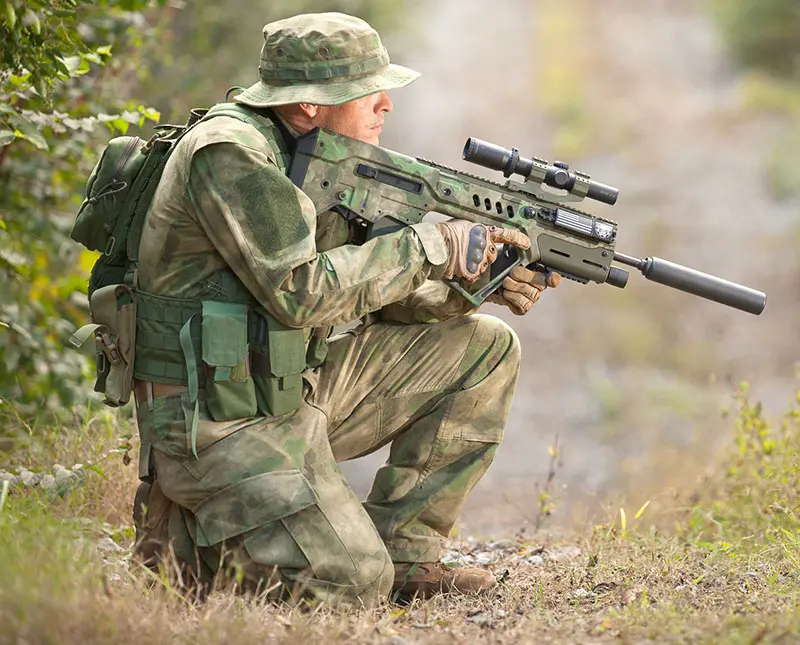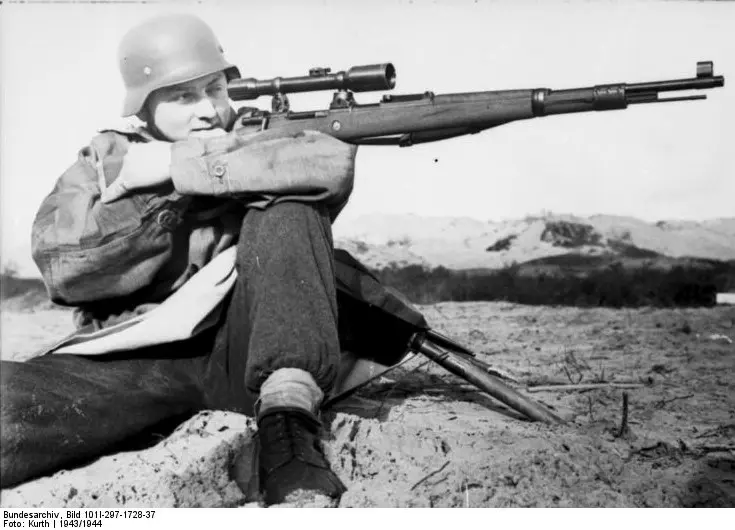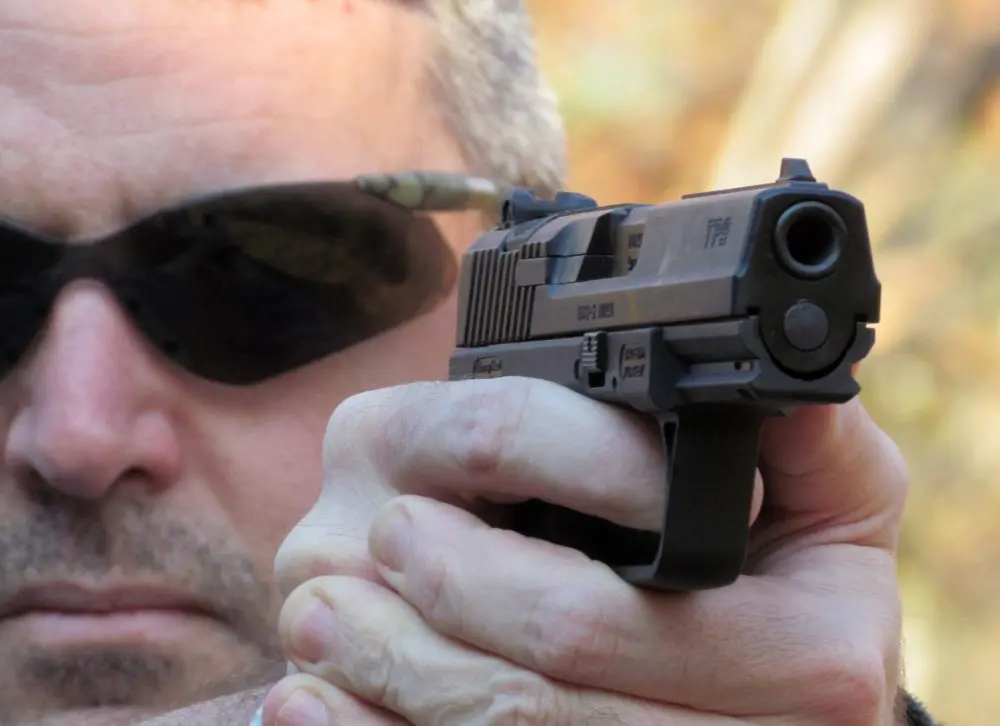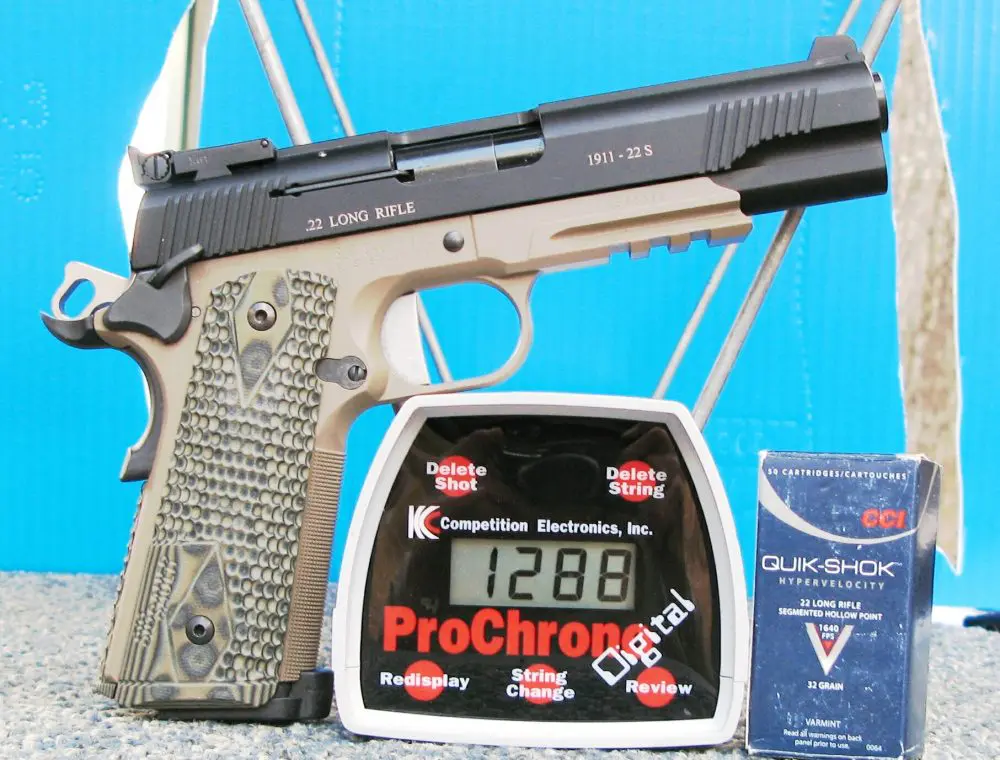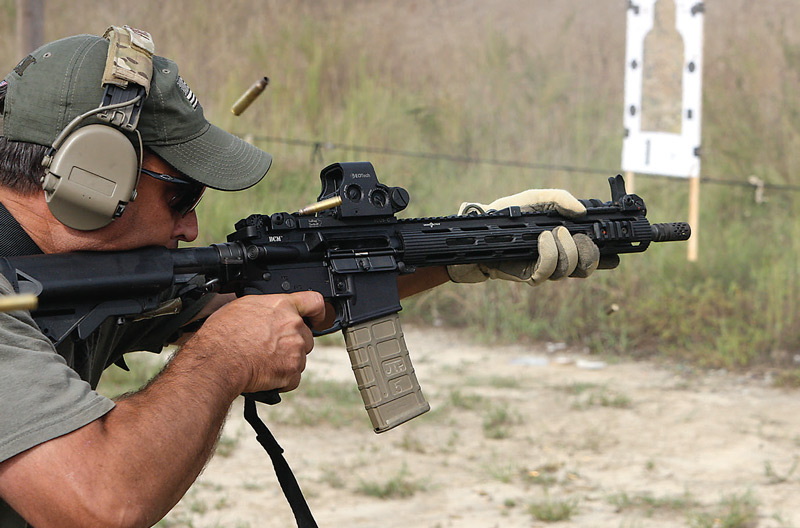
Ar owners have a common question: Is it necessary/ wise/beneficial to change out the OEM trigger in their rifle for an improved aftermarket trigger group? Like many questions, this one gets the classic military response of “It is situationally dependent.”
Table of Contents
IF YOU ARE …
For the average shooter, there are probably more pressing deficiencies in the equation that are leading to poor hits than the quality or weight of the trigger. Being able to support the gun correctly in any stance or position is the likely shortfall, and a car-payment quality trigger can only offset a sloppy hold so much.
Behind that, the most likely culprit is poor manipulation of the trigger, which is fortunately easy to get after. Dry fire is the key to the shooter being able to feel the stages of the trigger and gain confidence that he or she can press through them on challenging targets. The AR has so many makers of lowers and parts that each individual rifle can have a unique combination of the movement/pretravel stages and let-off that characterize the basic trigger group.
For the shooter who is an accomplished veteran of “X” many qualifications, training courses, or years behind the system and feels that the above characterization does not apply, there is a decision point that drives the next appropriate step. That is to determine what is the objective.
Broadly, the shooter must determine whether they want to gain proficiency on a weapon for increased capability in professional use, or they want to shoot better with a given rifle for personal use. Personal use may include home defense. It might also overlap professional use if a mission-type user has the freedom to use a personal rifle.
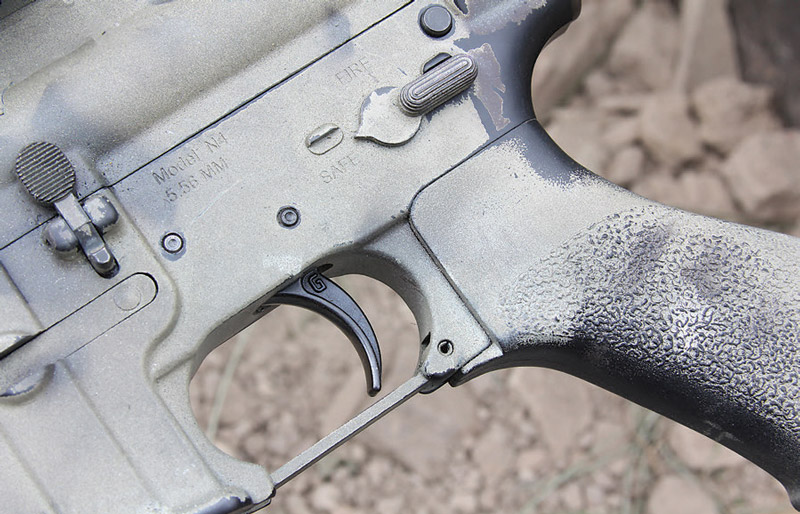
IT DEPENDS …
If the goal is to improve hits with a duty rifle through practice on a personal AR, the likely answer is “deal with the trigger you have.” I will cover some steps to help out in that department.
However, some shooters are at a level of training or competition where the trigger is becoming an identified nuisance rather than an easy scapegoat. For that pool of folks, replacement becomes a solid option. The oversimplified self-test I recommend is:
- Do you shoot well over 1,500 rounds a year?
- Do you train more than 15 times a year?
- Do you routinely shoot at targets smaller than 8 MOA?
If a shooter can’t check all three boxes, it is probably best to work on getting the most out of the factory trigger. There are two camps among trainers on skills transfer. I’m a big believer in training and competition having a large transfer back onto the duty weapons, even if the equipment isn’t identical.
But I firmly believe a shooter has to be well grounded in order for this to be the case. A basic shooter who is still working on confident manipulation and application of the fundamentals may only create a false sense of capability and feed into a crutch mentality. You hear it pretty often on the range: “If I only had my super teflon-coated XYZ, I could make that shot.”
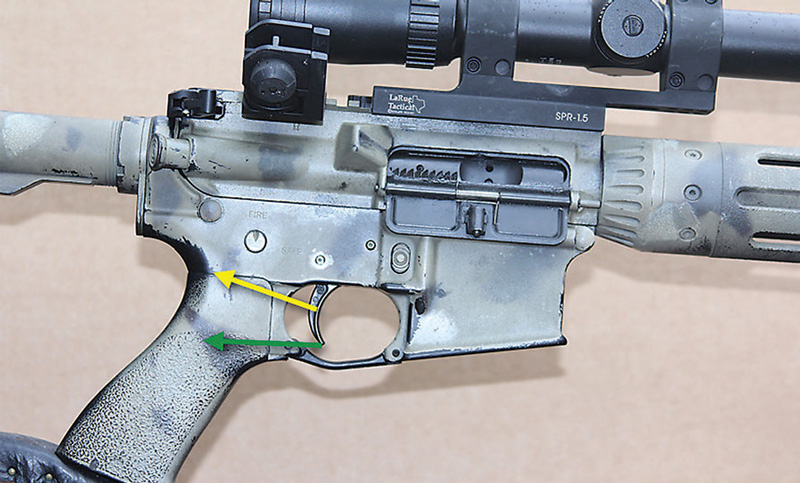
For the individual shooter who is on a personal AR and has no need to transfer skills anywhere, it is a simpler equation.
Are you frustrated by your ability to hit with the current trigger?
Do you have money?
If the second item is an issue, a shooter may try the mission-user tips before investing in a trigger.
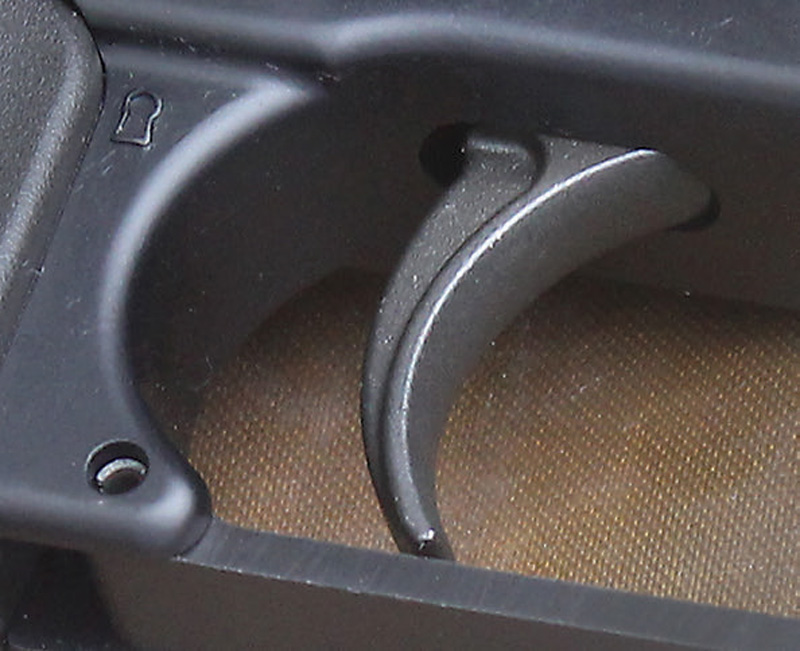
INSTANT FIX #1
Use leverage: attack the tip of the trigger. The shape of the AR trigger pulls the shooter into the middle, where it is curved and has less mechanical advantage over the pivot point. This is no drama in most cases and is a comfortable position for easy targets. When the difficulty spikes, a shooter can reposition their finger down to the tip for a significantly easier break.
This technique predates us, as it can be found on old 1903 Springfield match rifles that have checkering on the tips of their triggers.
If I am prone or well supported on a high difficulty shot, I will also change the attack angle on the trigger by shifting my hand down the pistol grip slightly. This puts the hand where the trigger finger is pressing from a right angle to the trigger, as opposed to where the hand tends to ride choked up high on the pistol grip at max speed. This is more pronounced with the standard M16A2 grip than with less angled aftermarket choices such as the BCM Gunfighter.
Changing the angle and getting to the tip of the trigger shave weight off the pull. Try it with a trigger gauge some time—you might be surprised how much the pull varies from centered to the tip at an advantageous angle. Even on great triggers, I have measured a one-pound difference.
INSTANT FIX #2
Lube the trigger group. Seriously, do it now. More specifically, get a quality lube or grease where the sear releases the hammer. This step can do wonders in masking or rounding off some of the “bumps” and grit that are frequently in OEM trigger groups.
With older lubricants, this step had to be done frequently to work, because the lube would run off. This is why many shooters would tear down their trigger groups and apply a good grease on the contacts. The new breed of lubricants on the market are light years ahead in how well they “stick” and seem to have a much greater effect on slicking up the trigger pull.
I’ve been using FireClean on a number of triggers over the last year and have had great results. It is runny enough to slide into the contact areas of the trigger group with a well-aimed drop, but also seems to stick through hard use. The FireClean has a fairly dramatic effect on the pull quality as well.
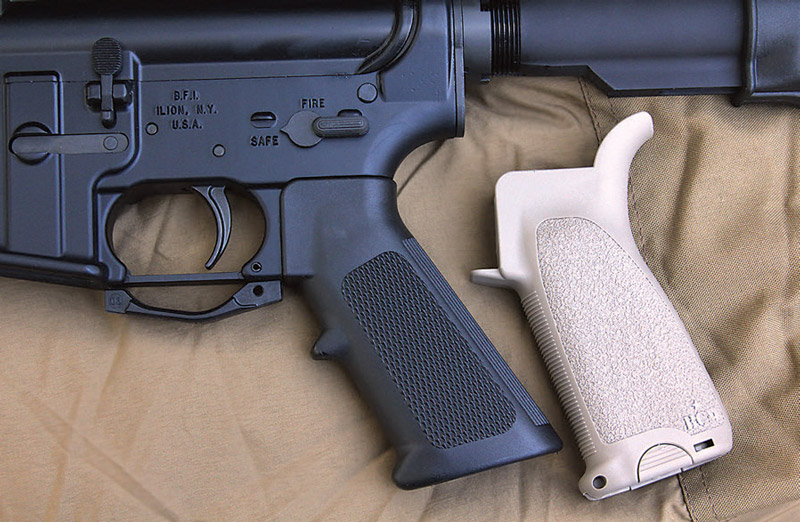
INSTANT FIX #3
Relax. Seriously, that’s it.
On a difficult shot, consciously relax the firing hand slightly. Or for shooters who are white knuckling the pistol grip to crush the rifle into stability, relax the firing grip a lot. If you pay attention to where your best shots are coming from, you will likely note that your hand is relaxed.
A quick gauge is to determine what you feel more of—the pistol grip as your other fingers are wrapped into the checkering, or the face of the trigger. On a really awful spec trigger or the heavy pull on a burst trigger group, the shooter will need a little more resistance on the grip to anchor the trigger press, but even then it is probably less strength than many shooters routinely apply.
A simple instant relaxation technique is to lift the firing-hand thumb. If the thumb is tightly curled down, the opposing fingers are also tensed.
Once a shooter has relaxed (easy to say, sometimes harder to do with the stress of a tough shot), he can then feel for the face/tip of the trigger. Depending on the shooter’s hand size, pistol grip on the gun, and normal finger placement on the trigger (pad vs. first crease), the predominant feel may be the edge/corner of the trigger or the smooth face. Whichever, once the shooter can genuinely feel this, it is much easier to press the shot past the break without disturbing the sight picture.
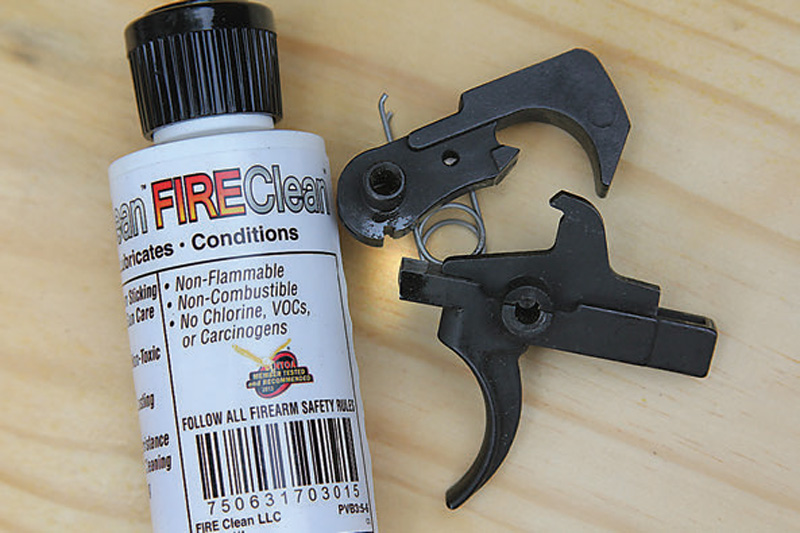
EASY UPGRADES
There are two simple upgrades that can help give a shooter additional advantage over a lackluster trigger. In many cases, both of these may be permissible changes on an organizational weapon.
One is to ditch the stock trigger guard. The standard trigger guard does not allow the trigger finger to get well centered on the tip and causes the trigger finger to drag on the inside of the guard. For the .001 percent of the shooting population that need the folding winter/mitten configuration of the stock piece, sorry.
There are several options on the market. Most are an improvement. The Magpul MOE and enhanced aluminum trigger guard are most prolific and what I have the most time on. In addition to allowing the shooter better access to the lever end of the trigger, the guards offer more room with gloves. They also cure that annoying gap at the base of the guard that allows the stock guard to hinge.
Another easy mod is to try a different pistol grip. Few shooters do their very best work with the A2 grip. Service rifle competitors prove every year that great shooting can be done with one, but better choices exist. There are options that cover a wide range of grip angles, distance from backstrap to trigger face, and circumference. A shooter’s size, shooting stance, and preference will help sift through the many choices.
Don’t get emotionally invested in a certain model. I find that I shoot better with some grips than others. Even though I may like the appearance, feel, and handling qualities of a particular grip, the hits may show that I do not shoot it as well.
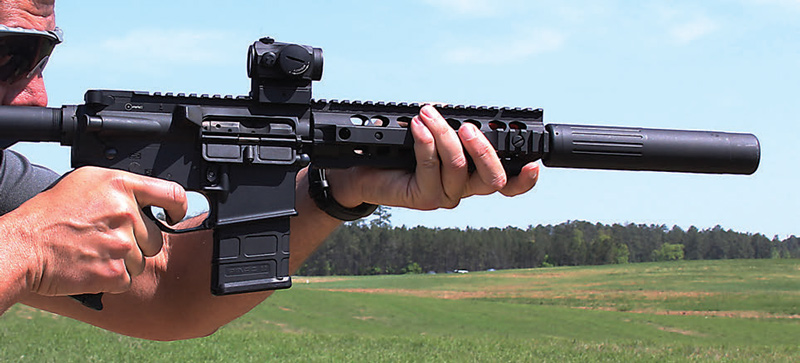
THE CURE
There is no doubt that when a shooter is shooting up to the maximum level he can achieve with a stock (particularly a poor stock) trigger group, swapping the triggers is one of the few places that a shooter can “buy” performance. A better trigger group can lead to a better shooting experience and totally change the feel and utility of a rifle.
Once a shooter has decided to upgrade the trigger group, options exist that span every specialty use of the AR platform. Not just competition triggers, but specialized triggers for every type of competition.
I stick to improved hard-use dutytype triggers in my rifles, triggers that weigh out at four to five pounds. Truly great shooting can be done with a trigger in this pull range without having to resort to a competition-type trigger that may be a liability or have less transfer back onto the duty gun.
The first big choice in replacement is single stage or two stage, meaning when the finger touches the trigger, is there a weighted travel before hitting resistance and a crisp pull (two stage), or is it only a crisp pull (single stage)? There are great examples of each, and no wrong answer.
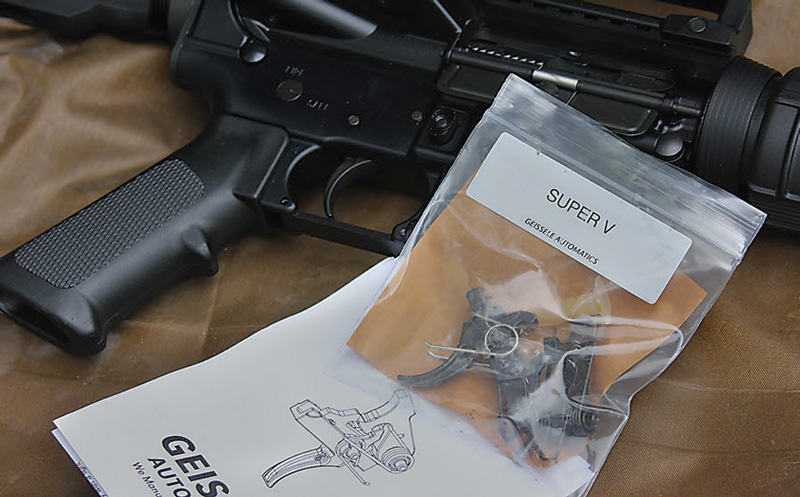
I have shot a good chunk of the aftermarket triggers and currently gravitate to the Geisseles. The company earned its chops as the go-to in national championships, but has nearly redefined itself by its work supporting specialized military requirements for hard-use triggers with a great break. I have the most time behind the SSA (PERFORMANCE BOOSTER, March 2012 S.W.A.T.) and the Super V.
The SSA is a great two-stage trigger. The shooter has some weighted take-up that precedes the “wall” and then a superb two-pound break. Crisp? Oh, yeah! It’s the trigger that the spec OEM unit wanted to be but couldn’t. It’s no coincidence that the best precision/distance shots I have made with an AR, the ones on my internal “proud of” list, have all been with SSA-equipped rifles.
The Super V is a hybrid single-stage trigger spec’d by Viking Tactics. It has a rolling break over a short travel with a short reset. You press it, it starts to roll— and shoot. It is the best trigger I have used for difficult unsupported shots, as it resists anticipation very well. It is great against carbine scenario shots—hasty positions, fleeting targets, fast followups, etc. It is also wickedly fast with the short reset and 4.5 pounds distributed throughout the roll.
My personal best split times on closerange drills are currently with the Super V. The hybrid pull is not designed for long-range belly work, but I have used it out to 400 plus with no issues and have cut one MOA from prone at 100. So, while not “meant” as an SPR/DMR trigger, it is not a handicap on tough shots.
15-SECOND RECAP
Support the gun. Get to the tip of the trigger and feel the face of the trigger bow. Relax the firing hand. Press. Repeat. If that doesn’t do it, lube the contact point between hammer and sear. Consider adding a different grip or enlarged trigger guard. If appropriate, buy a quality replacement trigger.
Good luck and good shooting!
